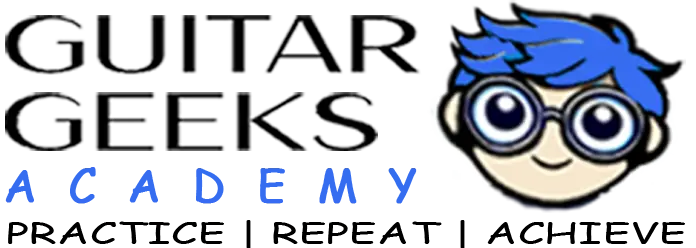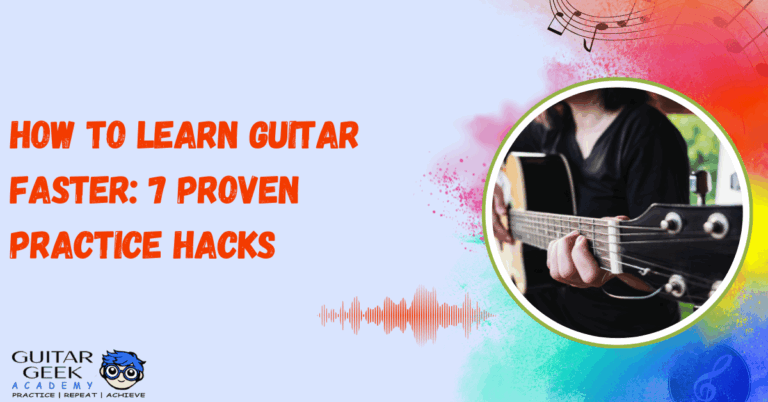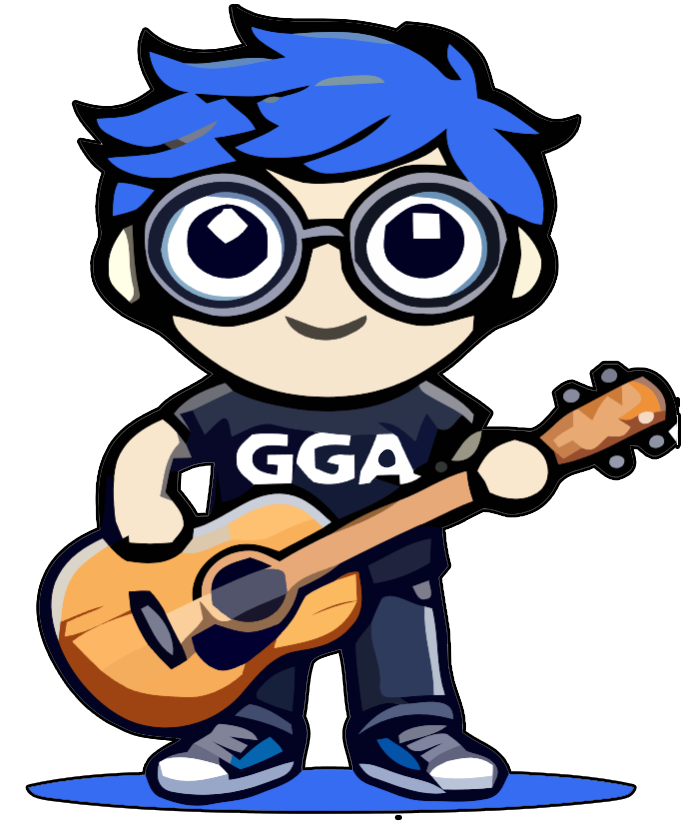Please login to bookmark
Every guitarist, no matter their skill level, eventually encounters a point where progress seems to stall. Despite hours of practice, nothing seems to improve, and frustration sets in. This experience is commonly referred to as a guitar plateau—a period where technical ability, speed, creativity, or overall musicianship feels stuck.
How to Break Through Guitar Plateaus: Advanced Practice Techniques
Plateaus can be discouraging, but they are also a natural part of the learning process. The key to overcoming them is identifying what’s causing the stagnation and making adjustments in practice methods. This article will explore advanced techniques that help break through these barriers, ensuring continued growth as a musician.
1. Understanding Why Guitarists Hit Plateaus
Before making adjustments, it’s important to recognize why progress has slowed. Some of the most common reasons include:
- Repetitive Practice Without Challenge – Playing the same exercises, scales, or songs over and over without introducing new challenges leads to stagnation.
- Lack of Structured Goals – Practicing without clear objectives makes it difficult to measure improvement.
- Mental Fatigue or Burnout – Over-practicing without variation can lead to boredom and lack of motivation.
- Technical Roadblocks – Certain techniques, such as sweep picking or legato playing, may require targeted practice to improve.
- One-Dimensional Playing – A focus on just one aspect (such as speed) rather than a balanced approach to technique, theory, and creativity can limit growth.
By identifying the root cause, it becomes easier to apply the right strategies for improvement.
2. Evaluating Your Playing: Where Are the Weak Spots?
To improve, a guitarist must first analyze their current abilities. This can be done in several ways:
- Recording Yourself – Listening to recordings provides a clearer perspective on timing, note clarity, and phrasing.
- Playing Along With a Metronome – This helps identify whether timing and rhythm need work.
- Seeking Feedback – A teacher or experienced guitarist can pinpoint specific areas that require attention.
- Self-Assessment – Paying attention to what feels most difficult in a practice session can highlight weak areas.
Once these weaknesses are identified, targeted practice strategies can be applied to address them.
3. Refining Practice Methods for Better Results
Many guitarists practice aimlessly, hoping for improvement over time. Instead, focusing on deliberate practice—a method that involves precise and goal-oriented training—yields better results.
Key Elements of Effective Practice:
- Break Down Difficult Passages – Instead of playing through an entire piece, isolate challenging sections and practice them slowly.
- Use a Metronome Consistently – Speed should be built gradually to maintain accuracy.
- Alternate Practice Tempos – Practicing both slower and faster than usual can improve overall control.
- Implement Shorter, More Frequent Sessions – Instead of long, exhausting practice hours, multiple shorter sessions help maintain focus.
By refining practice habits, improvements become noticeable much faster.
4. Advanced Techniques to Overcome Stagnation
When standard practice routines no longer lead to progress, incorporating advanced methods can help break through limitations.
A. Deliberate Practice for Precision
Deliberate practice involves identifying weaknesses and practicing with a clear goal in mind. This can be applied by:
- Playing difficult passages at half speed before increasing tempo.
- Practicing with different dynamics to gain better control.
- Using varied fingerings and picking techniques to improve versatility.
B. The 80/20 Approach to Practicing
The 80/20 principle suggests that 80% of progress comes from 20% of efforts. To apply this to guitar playing:
- Identify and prioritize techniques that have the biggest impact on overall performance.
- Focus more on solving technical difficulties rather than playing what is already comfortable.
- Spend less time on unnecessary repetition and more on skill development.
C. Improving Improvisation and Creativity
Many guitarists hit plateaus because they practice in predictable patterns. Breaking free from this requires:
- Jamming Over Different Backing Tracks – Experimenting with scales and modes outside of comfort zones.
- Learning Solos by Ear – This builds phrasing and helps incorporate new ideas into personal playing.
- Trying New Genres – Expanding into blues, jazz, or classical styles introduces fresh perspectives.
D. Adjusting the Practice Environment
Sometimes, subtle changes in surroundings can make a significant difference in breaking through stagnation. Consider:
- Playing in different positions (sitting vs. standing).
- Changing guitar settings or switching instruments.
- Practicing in various locations to refresh creativity.
Small adjustments can prevent practice from becoming repetitive and uninspiring.
E. Expanding Technical Mastery
For those feeling limited by technique, focusing on more advanced exercises can help. Areas to work on include:
- Hybrid Picking – Combining pick and fingers for smoother transitions.
- Economy Picking – A more efficient alternative to alternate picking.
- Sweep Picking and String Skipping – Techniques that add complexity to playing.
- Legato and Tapping – Enhancing fluidity and speed.
Dedicating time to these techniques ensures continued technical growth.
5. Mental Strategies to Keep Progressing
Technical ability alone isn’t enough to break through a plateau—mental approach plays a huge role.
Ways to Maintain a Productive Mindset:
- Set Clear, Achievable Goals – Whether it’s mastering a new song or improving a technique, structured goals keep progress measurable.
- Embrace the Challenge – Instead of frustration, view plateaus as an opportunity to refine skills.
- Take Breaks When Needed – Rest allows the brain and muscles to recover, leading to better long-term performance.
- Stay Inspired – Watching live performances or listening to skilled musicians can reignite motivation.
Building mental resilience ensures long-term success in guitar playing.
6. Utilizing Modern Tools for Faster Progress
Technology provides valuable resources for identifying weaknesses and improving efficiently. Some useful tools include:
- Metronome Apps – Essential for rhythm training.
- Recording Software – Helps analyze performance and track progress.
- Online Lessons & Masterclasses – Offers structured learning from professionals.
- AI-Based Practice Tools – Some apps provide real-time feedback on accuracy.
Incorporating modern tools into practice makes it easier to measure and refine playing skills.
7. Finding Continuous Inspiration to Keep Growing
Sometimes, progress stalls due to a lack of inspiration rather than technical issues. To keep things interesting:
- Explore new music styles and artists.
- Attend live concerts or jam sessions.
- Learn songs from different genres to expand musical vocabulary.
- Collaborate with other musicians to gain fresh ideas.
Staying inspired ensures that guitar playing remains an enjoyable and evolving journey.
Conclusion
Hitting a plateau is a natural part of a guitarist’s development, but it doesn’t have to be permanent. By identifying weak areas, refining practice habits, and incorporating advanced techniques, musicians can continue to grow. Mental strategies, modern tools, and consistent inspiration further ensure that progress never stops.
If progress feels slow, focus on small improvements each day. Over time, these small gains will add up, leading to noticeable advancements in skill and creativity.









